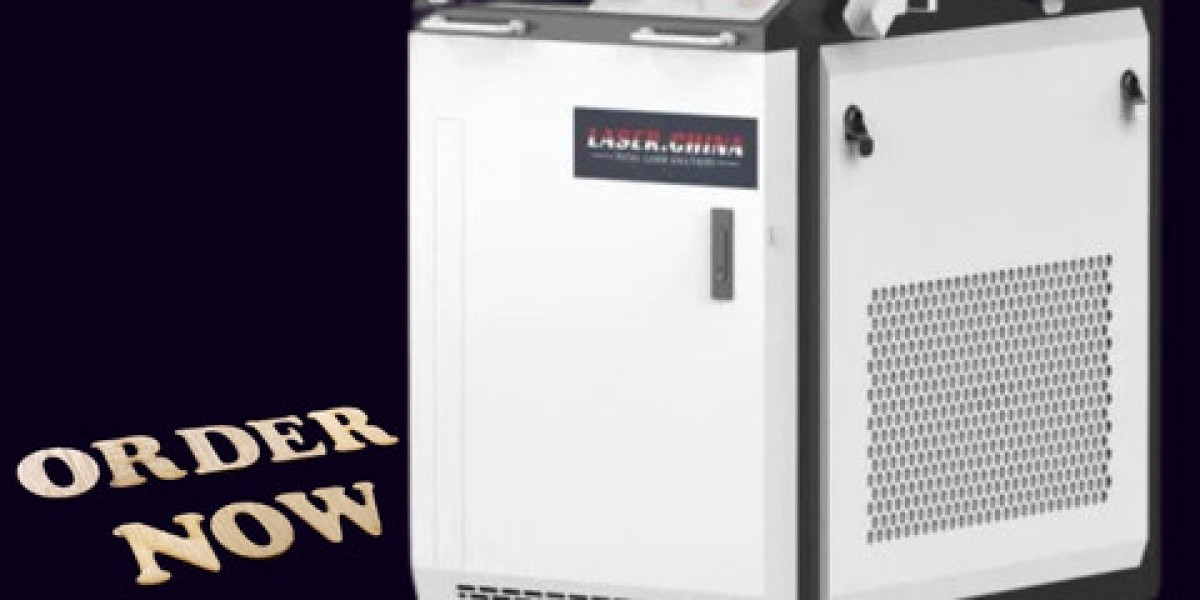In this article, we’ll dive into how laser cleaning works, its applications, and why it’s becoming the preferred method in various industries.
What is a Laser Cleaning Machine?
A laser cleaning machine is a sophisticated device that employs high-intensity laser beams to clean surfaces. Unlike traditional cleaning methods that rely on mechanical action or chemicals, laser cleaning uses focused light energy to target specific contaminants on the surface of materials. The laser energy heats and evaporates contaminants like dirt, rust, paint, oil, or grease, leaving the underlying surface intact. This process is incredibly precise and can be used on a wide range of materials, including metal, stone, plastics, and even delicate components.
The machine typically consists of a laser source (usually a fiber laser), a laser scanner, and a processing head that directs the laser beam to the surface. The laser beam can be adjusted in terms of power, frequency, and pulse duration depending on the type of material being cleaned and the level of contamination present.
How Does Laser Cleaning Work?
Laser cleaning works by emitting high-powered pulses of laser light onto the surface to be cleaned. When the laser light hits the surface, it interacts with the contaminants (such as rust, paint, or dirt), causing them to heat up rapidly. This rapid heating causes the contaminants to either vaporize or be ejected from the surface. There are a few key processes that occur during this interaction:
Absorption of Laser Energy: The contaminants on the surface absorb the energy from the laser. The laser light interacts primarily with the surface contamination due to the differences in absorption properties between the surface material and the contaminants.
Thermal Expansion and Ejection: The rapid heating causes thermal expansion in the contaminants, which leads to the ejection or removal of the material. In the case of rust or paint, the contaminants can be vaporized or blasted away.
Plasma Formation: When the laser light interacts with the surface, it can sometimes cause the contaminants to ionize and form a plasma. This plasma forms a visible, glowing cloud that is typically seen when the laser is in operation. The plasma's energy contributes to the cleaning process by further breaking down contaminants.
Controlled Scanning: The laser head moves across the surface in a controlled manner, ensuring that the entire surface area is cleaned evenly and without damaging the underlying material.
The cleaning process is extremely precise, which makes it ideal for delicate tasks such as cleaning intricate components in the aerospace or automotive industries. Moreover, laser cleaning doesn’t produce any harmful byproducts, making it an environmentally friendly option compared to traditional cleaning methods that might involve abrasive particles or toxic chemicals.
Applications of Laser Cleaning Machines
Laser cleaning technology has found a wide range of applications across various industries. Here are just a few examples of how laser cleaning is being utilized in different sectors:
1. Manufacturing and Metalworking Industry:
In manufacturing and metalworking, laser cleaning is used to remove rust, oxidation, and scale from metal surfaces. Whether it’s a large metal component or intricate machine parts, laser cleaning is used to prepare surfaces for welding, painting, or coating. The technology’s ability to clean complex geometries with precision ensures that the underlying material remains undamaged while the contaminants are completely removed.
2. Automotive Industry:
The automotive sector uses laser cleaning for a variety of tasks, from cleaning rust and paint off car parts to removing grease and oil from manufacturing equipment. The accuracy and non-abrasive nature of laser cleaning make it ideal for ensuring that automotive parts are cleaned thoroughly without compromising their integrity.
3. Aerospace Industry:
In the aerospace industry, laser cleaning is vital for maintaining and repairing aircraft components. The technology is used to remove rust, carbon deposits, and paint from aircraft parts without causing damage. Laser cleaning is particularly useful when cleaning delicate and expensive components, such as turbine blades or engine parts, where precision is crucial.
4. Cultural Heritage and Restoration:
Laser cleaning has proven to be a valuable tool in the conservation of historical artifacts and artwork. It is employed to remove dirt, grime, and corrosion from sculptures, monuments, and other cultural heritage items without causing any harm to the original material. Its precision and ability to target only the contaminants make it ideal for preserving delicate surfaces while maintaining their historical value.
5. Nuclear and Pharmaceutical Industry:
The nuclear and pharmaceutical industries require stringent cleanliness standards, and laser cleaning has become a preferred solution for cleaning delicate and highly regulated equipment. It can be used to remove radioactive contamination, sterilize equipment, and ensure that manufacturing surfaces are free from harmful residues.
Why Laser Cleaning is Gaining Popularity
Laser cleaning machines are gaining widespread acceptance for several reasons:
Environmental Impact: Unlike traditional cleaning methods, laser cleaning does not involve the use of harsh chemicals, water, or abrasive materials. This makes it an environmentally friendly option that minimizes the risk of contamination and waste disposal issues.
Precision and Control: The ability to control the intensity, pulse duration, and scanning speed of the laser means that the process can be fine-tuned to meet specific cleaning requirements. This level of precision makes laser cleaning ideal for industries where surface integrity is critical.
Cost-Effectiveness: While the initial investment in a laser cleaning machine may be higher than traditional methods, it can lead to long-term savings. The reduced need for consumables (e.g., chemicals, abrasives) and the minimal maintenance required for laser machines make them a cost-effective solution in the long run.
Versatility: Laser cleaning can be used on a wide range of materials, including metals, plastics, ceramics, and glass. This versatility means that industries with diverse cleaning needs can benefit from the same technology.
Non-Abrasive Nature: Since laser cleaning is non-contact and non-abrasive, it reduces the risk of surface damage, which is a common issue with methods like sandblasting. This makes it an ideal option for cleaning delicate or high-value items that cannot afford to be damaged.
Safety: Traditional cleaning methods, such as sandblasting or chemical cleaning, often produce hazardous dust or fumes. In contrast, laser cleaning produces no such byproducts, making it safer for operators and the surrounding environment.
How to Choose the Right Laser Cleaning Machine
When selecting a laser cleaning machine, several factors should be considered to ensure it meets the specific needs of your application:
Power Requirements: The power of the laser is crucial for determining the efficiency of the cleaning process. Higher-powered lasers can remove tougher contaminants, while lower-powered lasers are suitable for more delicate tasks.
Pulse Duration and Frequency: Different materials and contaminants require different pulse durations and frequencies for optimal cleaning. Adjusting these parameters ensures that the cleaning process is both efficient and effective.
Scanning Mechanism: The ability to adjust the laser scanning system’s speed and area coverage is important to tailor the cleaning process for specific jobs. Some systems offer automatic scanning and adaptive cleaning functions for better flexibility.
Portability and Size: For industrial use, the size and portability of the laser cleaning machine should be considered. Compact and portable units are ideal for mobile cleaning applications, while larger units may be better suited for heavy-duty industrial cleaning.
Maintenance and Support: Look for a manufacturer that offers excellent customer support and maintenance services. While laser cleaning machines require minimal maintenance, having a reliable service provider is essential to ensure smooth operation.
Final Thoughts
The rise of laser cleaning machine represents a significant step forward in industrial cleaning technology. With their precision, versatility, and environmental benefits, laser cleaning systems are becoming an indispensable tool in industries ranging from aerospace to automotive, and even art conservation. As more industries recognize the potential of this technology, it is poised to replace traditional cleaning methods, offering a safer, cleaner, and more sustainable solution for surface cleaning and preparation.


